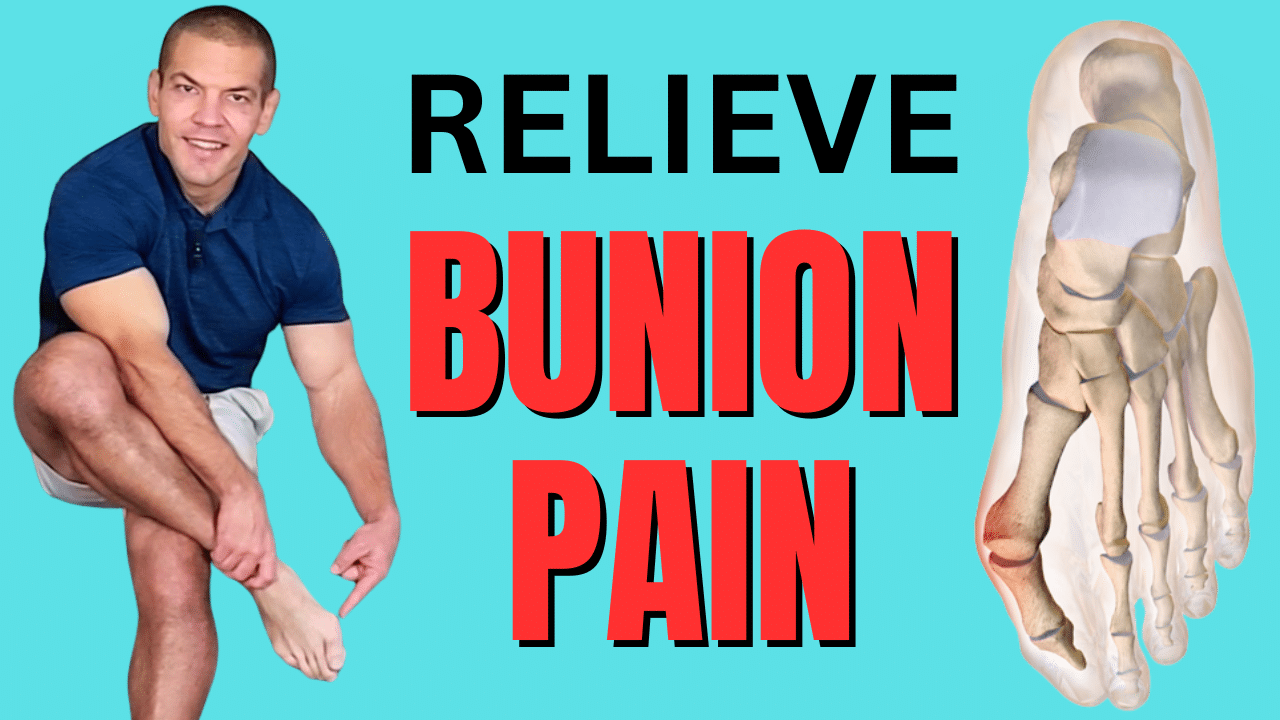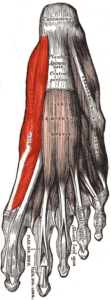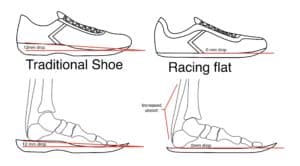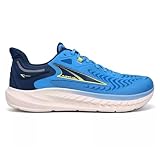What's The Best Way Of Treating A Bunion In The Big Toe?
Watch the video to learn 5 little-known tips for treating a bunion in the big toe without surgery.
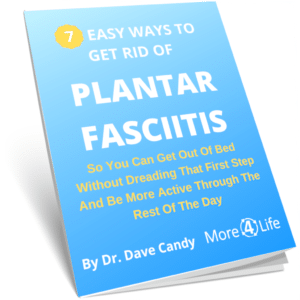
Can You Treat A Bunion Without Surgery?
I've had bunions since as young as I can remember. I remember being in Middle School in wrestling practice and coming home almost in tears because of the pain on the ball of my foot.
If you don't know much about wrestling shoes, they're very thin and often cut very narrow.
Additionally, you spend a lot of time on your toes when you wrestle.
I had bunion pain that gave me pain for a number of years through college when I stopped wrestling. Additionally, I switched to wider shoes, the pain eventually went away.
The bunion is still there, it just doesn't hurt. So that begs the question:
Can You Get Rid Of The Bunion Deformity Without Surgery?
Well, to understand that, you have to really know what causes a bunion.
What Causes A Bunion?
Essentially, it's a buildup of extra bone where you've got abnormal tissue stress on the big toe. As a result your body lays down extra bone over that area.
Once that's happened, it is more or less permanent.
So to get rid of a bunion deformity does require surgery.
However, bunion surgery outcomes aren't that great.
Does Bunion Surgery Work?
Some case series report upto 25 to 50% of patients being dissatisfied after a bunion repair.
A 2018 systematic review in Bone and Joint Surgery that pooled 229 studies found that about 10% of people are dissatisfied after their bunion surgeries. In 5%, it actually doesn't even fix the problem; the problem comes back.
There are risks of bunion surgery including:
- infection
- non-union of the repair
- persistent pain
- needing another surgery
So if you're just having cosmetic problems and you just want to look nice in sandals, I would highly suggest not having bunion surgery because the risks are much greater than the benefit.
If your bunion is giving you trouble in your everyday life and it's restricting you from doing the things you need and want to be able to do, and you've tried all the conservative treatments that you possibly can and still have persistent pain and disability, then you've got about a nine out of ten chance of having a good outcome.
But there's a still a 10% chance that you might have a bad outcome.
What Can You Do To Stop Your Bunion Pain Without Surgery?
Here are a couple of ways to relieve bunion pan without surgery.
Wear Wider Shoes
You definitely want to switch to wider shoes. One of the biggest causes of bunions is trying to fit a foot that's naturally fan-shaped like this into narrow, pointed shoes.
Stilettos or high-heeled shoes that really point your toes down into a squished-down pointed toe box are the worst culprits.
Additionally, when you're wearing high-heeled shoes, you're up on your toes, which further worsens the problem.
So getting out of the high-heeled pointy shoes and switching to a wider toe box and probably a flat heel are often a good solution.
Bunion Stretches and Exercises
Additionally, you can do some exercises and stretches to help get your toe back in better alignment.
Granted, they may not completely take care of the problem, but they can help.
Your big toe joint is called the metatarsophalangeal joint.
Big toe distraction
To help counteract a bunion, grab your big toe with your hand and the metatarsal with your other hand.
Pull the big toe away from the metatarsal to get more space in the joint.
Pull the big toe sideways
Then, after you've stretched out the toe like that, and start to kind of pull it sideways.
If you've got a really bad bunion, there will be a bone spur on the outside of the toe that will eventually limit your range of motion. Just go move the big toe out to the side as far as you can comfortably.
Then just hold it there for about 30 seconds.
Activate your foot muscles
Then, after you've done that, then you want to start to activate the muscles that do that.
You've got a muscle on the bottom of your foot called the abductor hallucis.
The hallux is your big toe, and so that abductor hallucis moves the big toe away from the midline.
Now the tendon of it runs right around this big toe joint, and if you've got a bunion there, it impedes the line of pull that allows that toe to be pulled out to the side.
That makes it really hard to spread your toes out.
It's already a hard muscle to recruit because you don't really think about using it in everyday life.
Use your hands to help
If you manually separate your toes a little bit using your fingers and then try to hold it out using your muscles. So it's an active assist exercise.
Dome your arch
Doming your arch a little bit or scrunching the toes a little bit lifts that metatarsophalangeal joint up and gets it out of the way of the tendon.
This can make it easier to spread your big toe out to the side.
Now, that's all great in theory, but what happens when you go to stand up?
Well, ideally, you want to be able to maintain that position of scrunching the toes and abducting the big toe as you go to stand up.
Doing so gives you an additional little post to prevent overpronation when walking.
So, scrunch the toes, abduct, and then you've got a little post here to prevent you from flattening out your arch too much when you're walking.
Bunion Corrector Toe Spacers
Using toe separators can also help you get your toes to spread out to reduce the severity of a bunion.
Again, they may not fix it all the way, but can help reduce the severity of a bunion without surgery by restoring the natural fan-shape of the foot.
VYCE PrimalStep Toe Separators, Spreader...
50% OffShoes For Bunions
Speaking of the natural shape of the foot, that brings me to the next product, which is Altra running shoes.
Altras have a foot-shaped shoe; that's one of their hallmark features is that they're actually more fan-shaped. They don't kind of come into a point so that your foot functions in more of a natural form.
Most of them are zero-drop as well, meaning that your toe and your heel are at the same angle, so it doesn't put a lot of pressure down on your toes.
The Altra Torin is made for people who tend to overly supinate or tend to hit a little more on the outer side of their foot.
ALTRA Men's Torin 7 AL0A82C4 Road Runnin...
30% OffAltra has a lot of different models as well.
The Altra Provision is a medium-support shoe.
ALTRA Women's AL0A7R7O Provision 7 Road ...
(as of January 19, 2026 19:09 GMT -06:00 - More infoProduct prices and availability are accurate as of the date/time indicated and are subject to change. Any price and availability information displayed on [relevant Amazon Site(s), as applicable] at the time of purchase will apply to the purchase of this product.)They give a little bit more pronation control, so they're more of a stability shoe.
The Altra Paradigm offers even more pronation control for people with truly flat-footed or people who overpronate a lot.
ALTRA Men's Paradigm 6 Road Running Shoe...
Conclusion
To avoid bunion surgery try the following tips:
- mobilizing your toe joints
- strengthening your abductor hallucis
- doming your arch when you walk
- using toe spaces
- switching to wider shoe
Like this post? Check out some of our other posts about foot pain and plantar fasciitis.
When Is Foot Arch Pain Not Plantar Fasciitis?
How To Relieve Pain In Foot In The Morning

